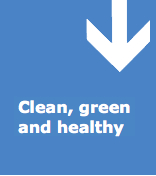Clean, Green and Healthy, Pedestrians first

Did you know that the City of Vancouver’s transportation priority is to put the pedestrian first?
Walking could be one of the most important forms of transportation for more because it combines fitness, which promotes wellness, but and it is also a sustainable form of transportation that will allow are allowing our city to grow economically.
In our cultural it seems that time is becoming more important as folks struggle with family responsibility, work stresses and the need to live an active lifestyle.
Paradoxically, by slowing down a bit and making the time for walking – one gains time. For example, I know myself that the eternal struggle to find the time and the energy to exercise at the gym is usually the one activity in the day that does not consistently happen. Given that a trip to a gym can be typically a two hour block of time, it means one has to either get up early in the morning or making time at the end of the day for this activity. People are juggling numerous responsibilities to their family, to their work and other volunteer activities and for many exercise is the priority that falls off the back. On a positive note, I have discovered that I can get a lot of exercise throughout the day just by walking from one destination to the next.
I was surprised how little the time difference was between distance travelled using transit and walking. For example, I live in the West End and my kids go to school in Kitslano (no French immersion downtown) and I typically accompany them to and from school. We take the bus and for the most part it is a good time that I enjoy spending with my kids. Using public transportation with your kids always provides “ teachable moments” where we can have shared experiences to discuss (there is always some drama being played out on the bus). Anyways, the difference between walking and taking the bus from our home to my kids’ school is 10 minutes. It really isn’t that much time compared to what often feels like the mind-numbing minutes spent on stationary exercise equipment; maybe I need to download some better music.
The City of Vancouver is starting to get its collective head around walking. Check out this page on the city’s websiteClean, Green and Healthyand Park Boards websitesStep Out and Walk Program that have info about different walks of interest in the city.
Another great benefit about walking is it is almost free. A few observations from my own walking experiences.
1. You can even smile at people and say hi. (Disclosure: I am not so good at this but my wife is awesome at being friendly).
2. People who walk often have smiles on their faces.
3. One can actually have conversations with strangers and make smart observations about stuff. (People are pretty polite even with the banal issues that I sometimes talk about -at least they pretend to listen).
4. You meet a lot of your friends and take little moments to catch up. (This provides a feeling of being connected to one’s community).
5. Walking is good for thinking, reviewing yesterday and planning your day. (A recent study linked benefits of walking to reduced rates of Alzheimer’s disease:JAMA article )
By making improvements to the city’s built environment to promote walking achieves a number of concurrent goals including reducing green house gases, promoting sustainable transportation, promoting fitness, encouraging active lifestyles and finally the promotion of health and happiness.
This may seem like “nanny state” stuff to the more grumpier of you out there, but it really is going to way of the future. Our bodies need to be physically active. Many of chronic diseases that are the rise in our society such as heart disease, high blood pressure and diabetes are related to sedentary lifestyles and our diet.
If we can make the finer details of the city more interesting, it will encourage more walking. The pedestrian’s environment needs to be safe, engaging and fun. Jan Gehl, the Danish architect and city planner speaks of the 5 km/hr scale. Streets and public spaces look different from the 60 km/hr of the car to the human scale of walking of 5 km/hr.
More and more now we need our city’s built environment to be designed for people walking.
WERA’s pedestrian plan
Geoff Meggs speaking on the Coast about pedestrians
